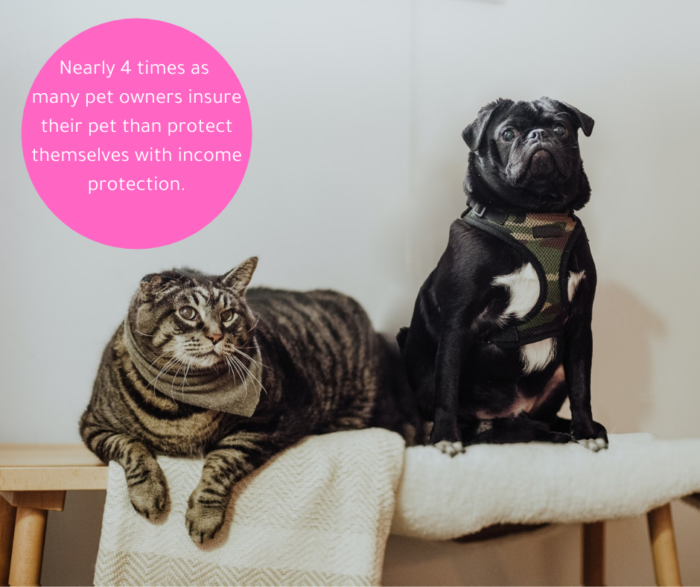13th January 2021
Who’s better protected, you or your pet?
When Legal & General undertook their Deadline to Breadline research looking into the financial stability of people across the UK and gauging how prepared people are for unforeseen events, the research threw up some interesting facts.

Although we don’t like to think about ‘what if’, if anything, COVID-19 has taught us how quickly life and circumstances can change. If you suddenly found yourself unable to work for more than 4 weeks, how would you cope? Rely on savings, your partner, sick pay or employer benefits?
The sad fact is that if you rent your home you’re more likely not to have insurance in place. This isn’t because you may be less able to afford insurance but more because buying a home triggers a desire to purchase protection. An explanation for the huge gulf between renters and homeowners when it comes to investing in protection could be due to the level of advice available at the point of renting vs buying a property – with the latter being far higher.
Of course, there are other triggers to purchasing income protection. Getting married, starting a family, the death of someone close and personally experiencing a serious illness would all prompt you to think about discussing the options of protecting yourself and your family. But then, there’s the cost.
The majority of people think that income protection is more expensive that it actually is. In fact, in the Deadline to Breadline research 24% stated this as the main reason for not buying insurance cover. On average, it’s believed that a monthly benefit of £1500 would cost £50 a month in income protection payments. In reality you may be surprised at how little it can cost. Take a 28-year-old non-smoker, opting to help protect a salary of £35,000 to the age of 65, the cost could vary from £38.88* down to £5.73 a month depending on the length of benefit, the deferred period and their occupation.
Covid-19 has forced the nation’s psyche into savings mode. The need for financial resilience, stability and control has become front of mind for many of all age groups when faced with job insecurity or the possibility of falling ill and becoming incapable of working.**
When you take into account the spending patterns, savings and debt of different households, the average household is just 24 days from the breadline – the length of time they could last based on their current daily spending rate and their current net savings (savings minus debt). When you compare the amount you spend on broadband, your mobile phone contract or Tibbles’ pet insurance, doesn’t spending £5.73 a month on income protection suddenly seem more worthwhile?
*Based on a Legal & General Income Protection Benefit quote, November 2020. 28 year old NS, OCC 1, 4 week deferred full cover, and 1 year deferred Low Cost option. Income protection does not include unemployment cover.
** (Savanta Consumer COVID-19 Tracker, 2020)
Ready to take the next step?

Ask us to call you
Request a callback

Speak to an advisor
Get in touch with one of us below
New Enquiry - 01242 226353
Adam Hayter - 01242 397001
Chloe Glinn - 01242 431193
Chris Henry - 01242 279727
Daniel Jones - 01242 397009
Ellen Roome - 01242 279725
Ricky Naylor - 01242 370827
